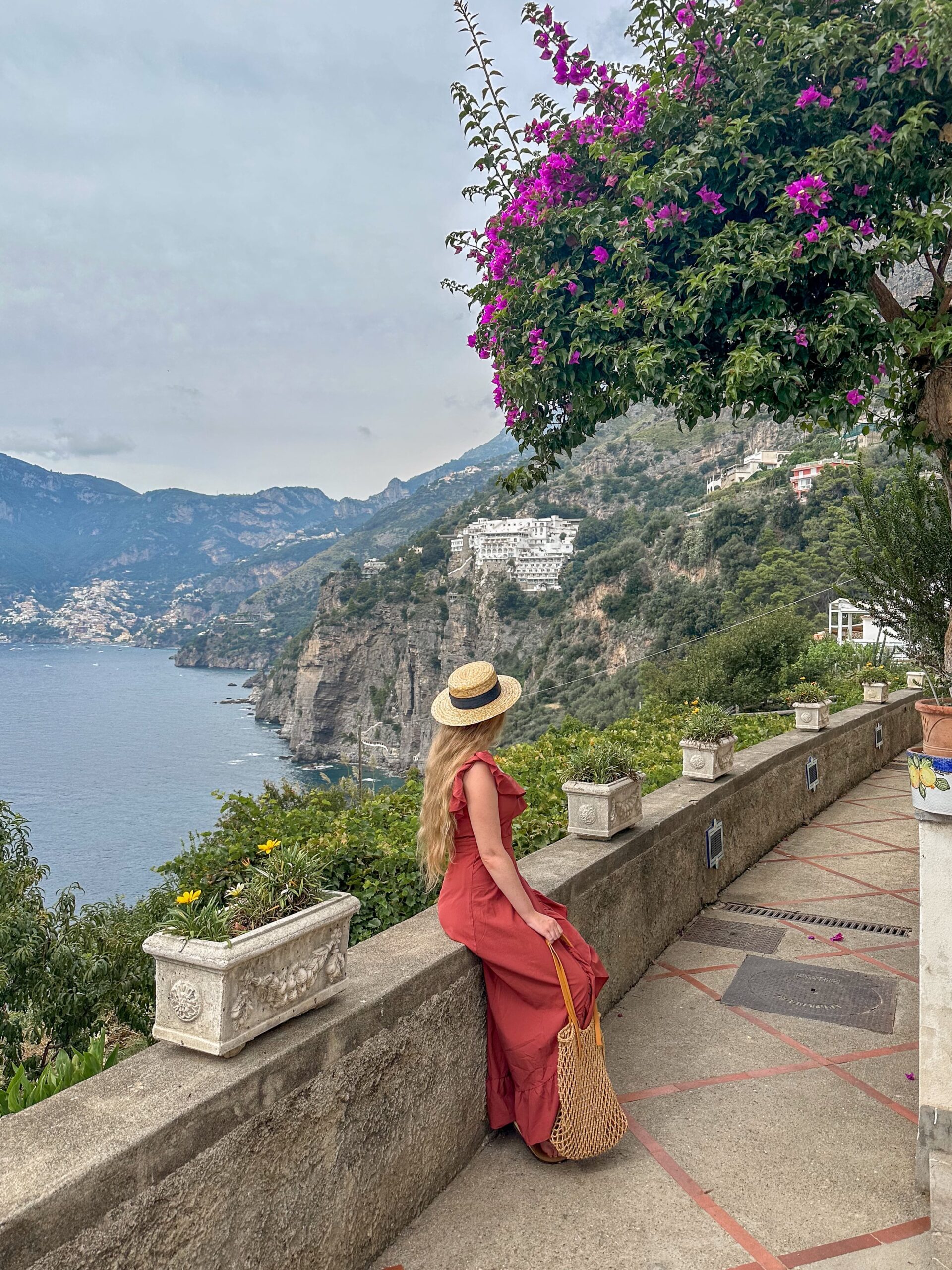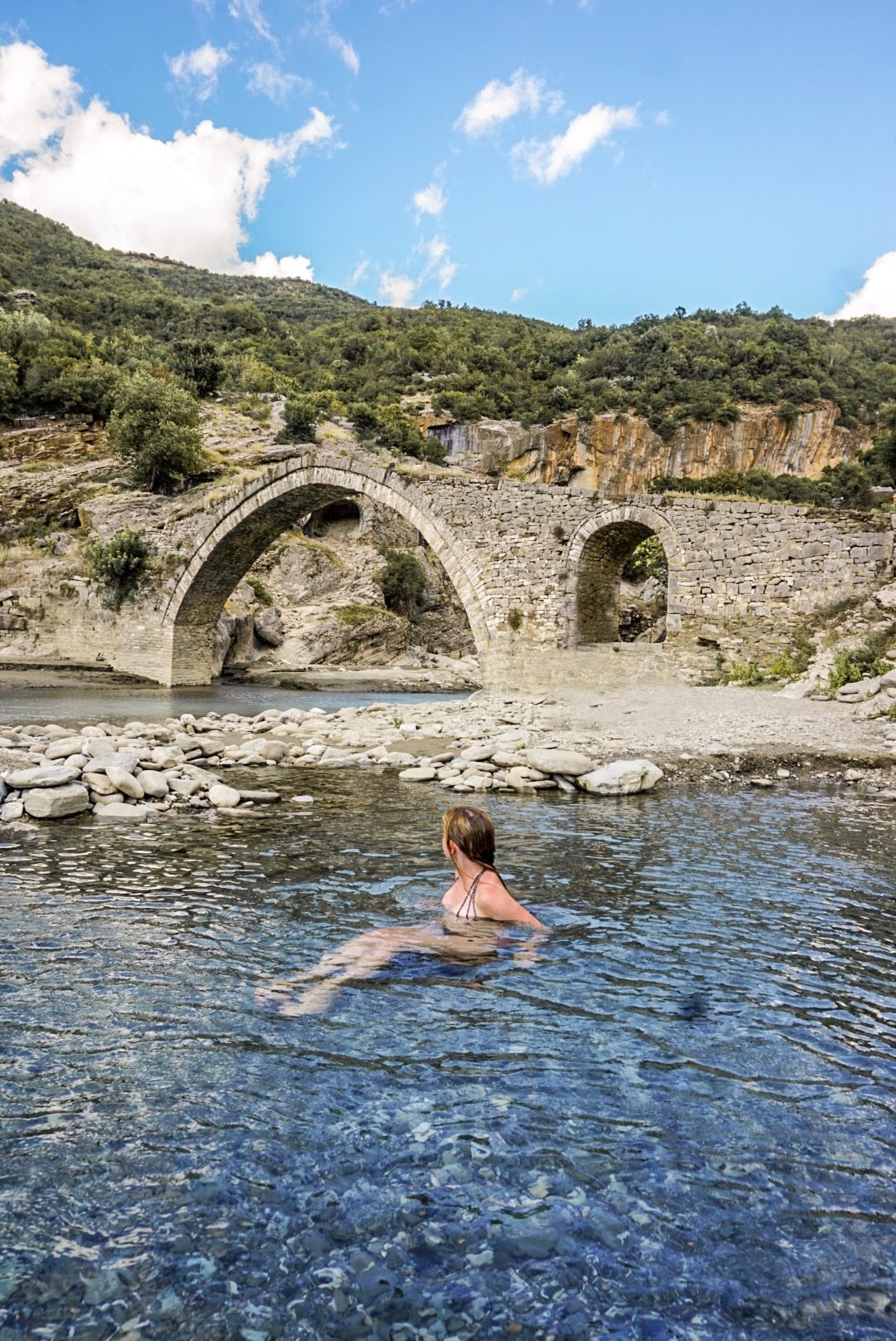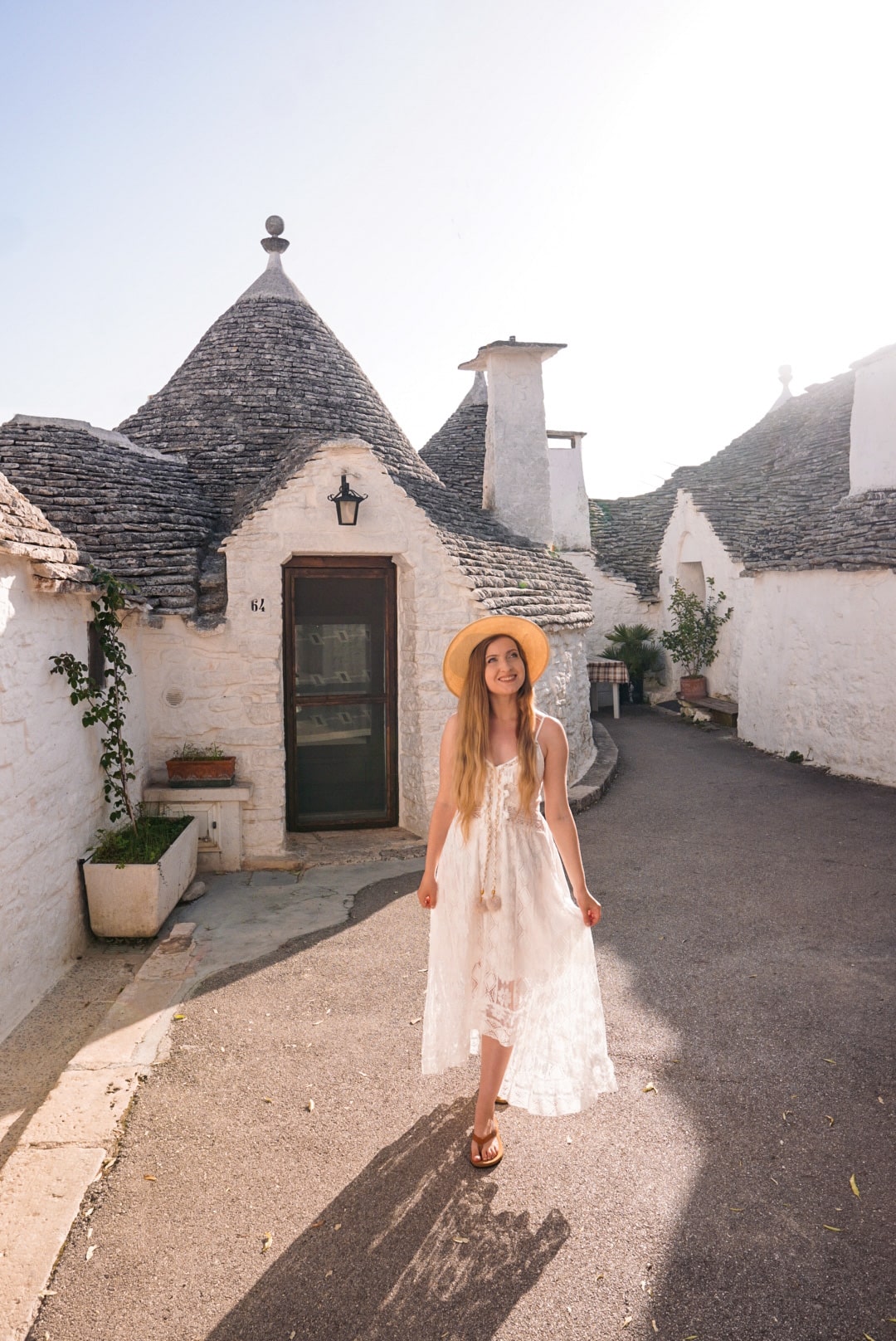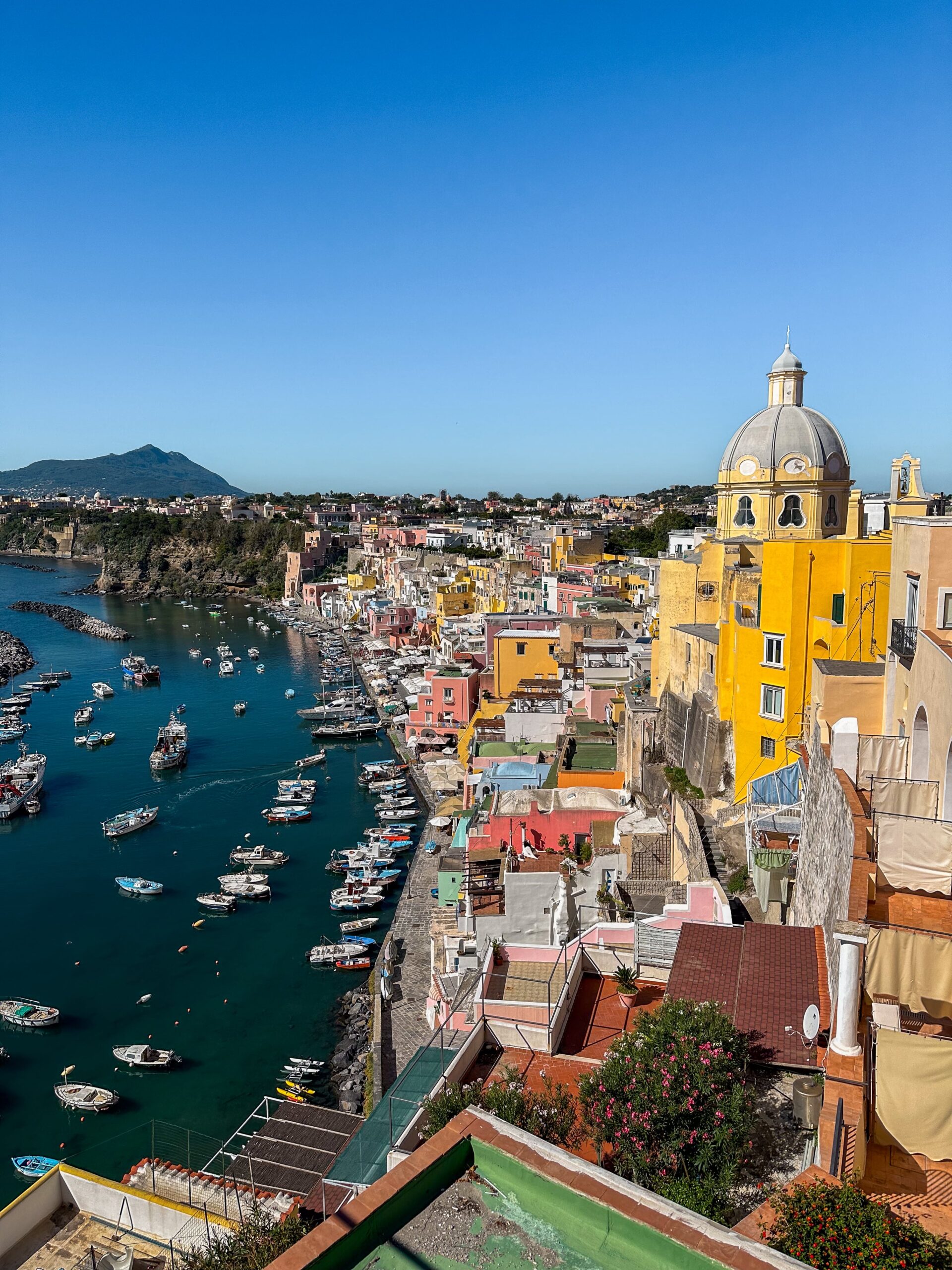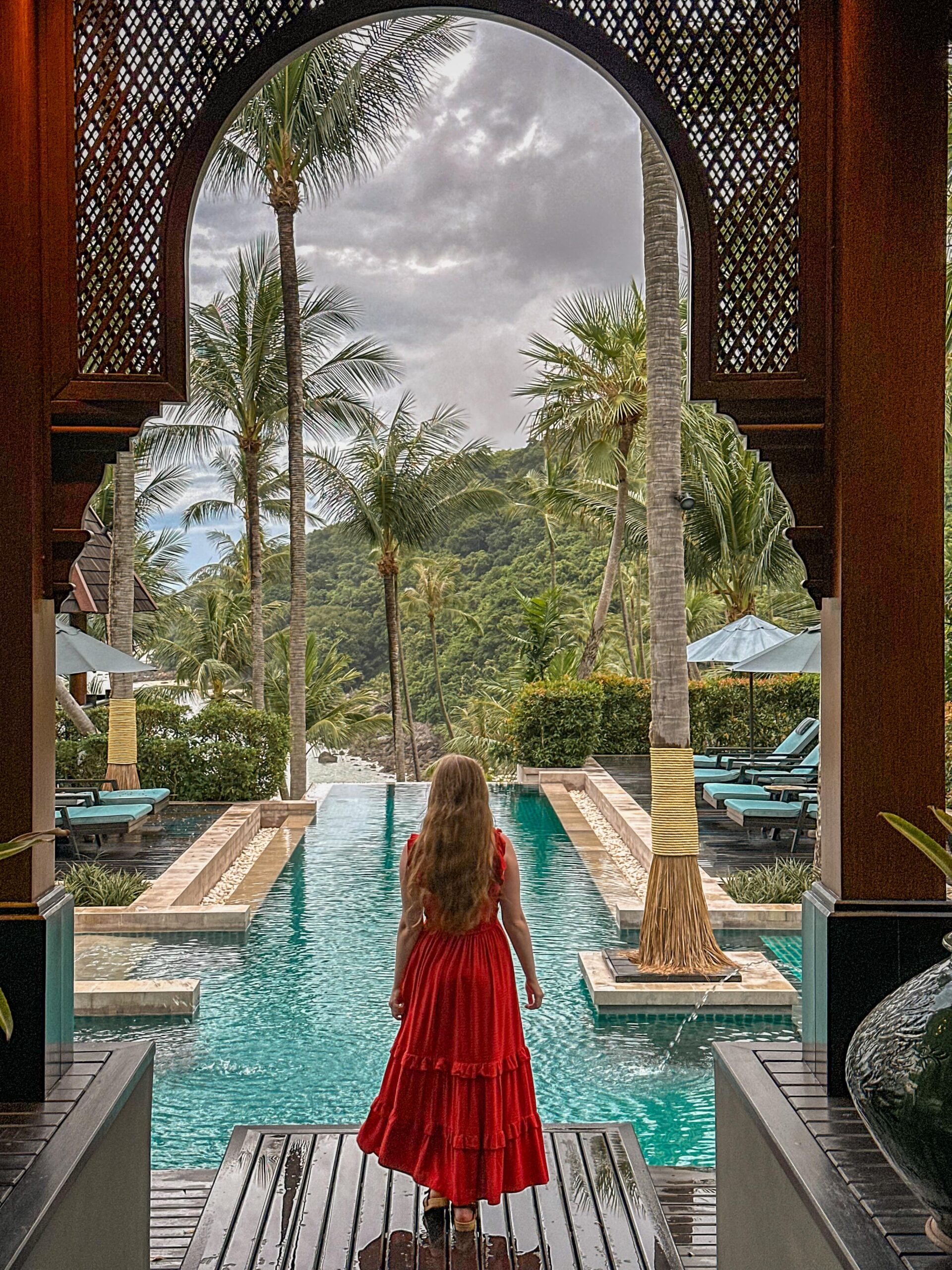Mostar is definitely an up-and-coming tourist destination. With it's close proximity to Dubrovnik and…
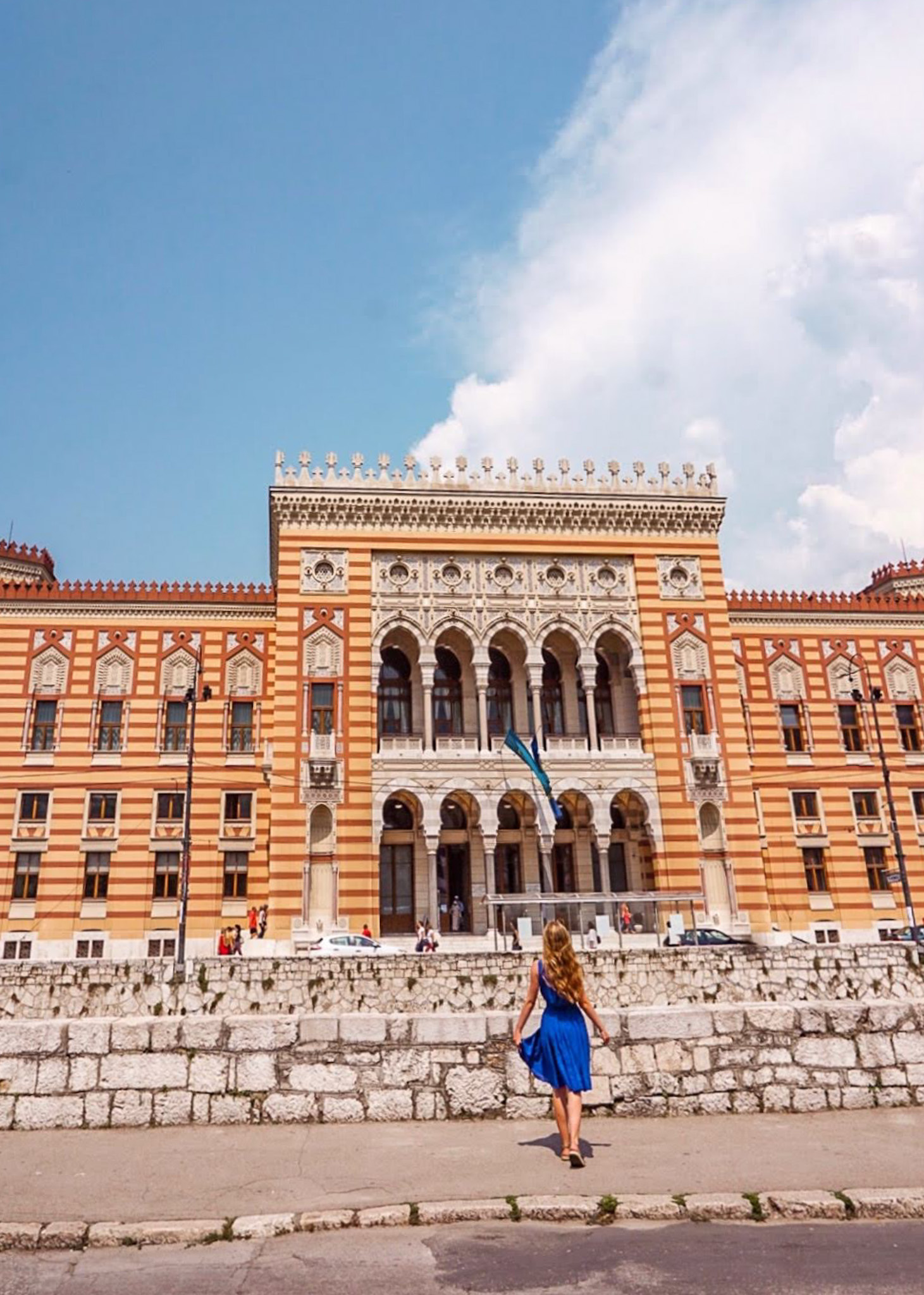
The Ultimate Guide to Sarajevo, Bosnia & Herzegovina
October 2, 2024
Bosnia and Herzegovina’s capital, Sarajevo, is a beautiful city with a rich culture, kind locals, and a tragic history. It is hard to imagine that just 30 years ago, the city was riddled with war and witnessed devastating crimes against humanity during the Bosnian Genocide. While there are still relics of this period throughout the city in remembrance of the tragedies that occurred here in the 1990s, there is also an atmosphere of hope, strength, and resilience.
Sarajevo is by far one of my favorite capital cities in Europe, and in my opinion, is highly underrated. There is plenty to do in and near the city, whether you’d like to wander through its charming old town, visit its fascinating museums, or enjoy delicious Bosnian dishes. Sarajevo is an incredible city that should be at the top of every European traveler’s bucket list!
Here is your ultimate Guide to Sarajevo, including the best things to do in Sarajevo, where to stay, Sarajevo’s best cafes and restaurants, and general important things to know about visiting Sarajevo.
What to know before visiting Sarajevo

Best time to visit Sarajevo
Sarajevo is beautiful year-round, but the best time to visit really depends on what you’re looking for. If you love mild weather and fewer tourists, spring (April to June) and early fall (September to October) are perfect.
In Winter, Sarajevo turns into a cozy, snow-dusted haven and is ideal for skiing enthusiasts who want to visit nearby resorts like Jahorina and Bjelašnica. Bosnia & Herzegovina is an amazing hidden gem for Skiers, offering top-tier skiing at a fraction of the price of more popular alpine resorts in Western Europe.
Summer in Sarajevo can get quite hot, but it’s still a great time to enjoy the city’s outdoor attractions and lively atmosphere. I was there in August, and it was undeniably hot, but not as bad as the heat in the more southern city of Mostar. There are lots of indoor attractions like Sarajevo’s incredible museums that will keep you cool during the peak heat of the day if you do decide to visit this time of year.
Language Spoken in Sarajevo
The official language in Sarajevo is Bosnian, though many locals also speak Croatian and Serbian. English is fairly common in tourist areas, especially among younger people, so you should have no problem getting by if you don’t speak the local language. I always suggest having a translator app downloaded just in case you find yourself in a situation where you need to communicate with a non-English-speaking local.
It’s always a nice gesture to learn a few basic phrases in Bosnian, like Hvala (thank you) or Dobar dan (good day). It’s a simple way to show respect and connect with locals.
Currency used in Sarajevo
The currency in Sarajevo is the Bosnian Convertible Mark (BAM or KM), and while credit cards are accepted at most hotels, restaurants, and larger shops, I strongly suggest having cash on hand for local artisanal shops and street vendors that don’t accept cards. ATMs are easy to find throughout the city, and exchange rates at local currency exchange offices are usually pretty reasonable.
Just be mindful of your cash. As with most major cities in Europe, pickpocketing can occur in Sarajevo, especially in crowded areas such as Baščaršija and popular tourist spots like the Latin Bridge or Sarajevo City Hall. While Sarajevo is generally a safe city, it’s important to be aware of your surroundings and take precautions against petty theft.
Respecting local culture & customs in Sarajevo
Sarajevo is a multicultural city, with a blend of Bosnian, Croatian, Serbian, and Ottoman influences. As with most cities in Bosnia, Sarajevo is primarily Bosnian-Muslim, so don’t be surprised if many restaurants you go to do not serve alcohol. In Baščaršija, Sarajevo’s old town bazaar, you’ll find the majority of the restaurants here will not serve alcohol, however, many more restaurants in the newer parts of the city will serve adult beverages.
It’s also important to be respectful of local customs in Sarajevo, especially when visiting religious sites like mosques and churches. For example, if you’re entering a mosque, make sure to dress modestly and remove your shoes before entering. Women may also be asked to cover their hair with a scarf (most mosques that require this will provide one for free). It’s also a good idea to be mindful of certain social norms, like avoiding loud or disruptive behavior in more conservative areas.
Where to Stay in Sarajevo

Sarajevo is overall an affordable city with lots of lodging options, from $15 a night hostel dorms to $300 a night 5-star hotels.
If you want to splurge on a luxurious hotel but you are typically a budget-conscious traveler, Sarajevo is a great place to do it! Even the most luxurious hotels in the city are quite affordable in comparison to luxury hotels in Europe’s more popular tourist cities. Depending on the time of year you visit, you can potentially stay at a 5-star hotel for less than $200 a night.
Likewise, you can really get a lot of bang for your buck at other price ranges in Sarajevo. There are lots of really nice midrange options that still have a luxury feel, even at just $85-$115 a night. There are also a lot of lovely family-owned guest houses in Sarajevo, which tend to be very affordable, with more of a cozy, homey, and traditional feel. Even the hostels in Sarajevo are really nice, with many offering comfortable dorms and complimentary breakfast.
Below are some of the best places to stay in Sarajevo for every budget.
Luxury
- Apeiro City Avant-garde Hotel: This ultra-modern hotel offers an avant-garde design with sleek, contemporary interiors. Guests can enjoy luxurious amenities, including a rooftop bar with panoramic views, a gourmet restaurant, and personalized service in the center of Sarajevo.
- Hotel Swissôtel Sarajevo: Located near the city center, this 5-star hotel combines Swiss precision with Bosnian hospitality. It features spacious, elegantly furnished rooms, a state-of-the-art spa and wellness center, and exceptional dining options, all with breathtaking views of Sarajevo’s skyline.
- Malak Regency Hotel: Situated by the river in a serene part of the city, Malak Regency offers a luxurious stay with refined decor, plush rooms, and extensive wellness facilities. Guests can relax in the indoor pool, enjoy a massage at the spa, or dine at the on-site restaurant offering a mix of international and local cuisine.
Midrange
- İsa Begov Hamam Hotel: This unique hotel combines history with comfort, featuring rooms that reflect traditional Bosnian architecture. Guests can also experience the historic Turkish bath on-site, adding a cultural touch to their stay. Located near Sarajevo’s old town, it offers easy access to all major attractions.
- Hotel Old Town: Nestled in the heart of Baščaršija, this charming hotel offers a perfect blend of modern comfort and traditional Bosnian style. The cozy rooms are well-equipped, and the location puts you within walking distance of Sarajevo’s top sites, making it an ideal choice for exploring the city.
- PLATINUM ROOMS Butique Hotel: This boutique hotel offers stylish, contemporary accommodations with a focus on comfort and service. With elegantly decorated rooms and a prime location near Sarajevo’s city center, it provides a perfect base for any type of traveler!
Budget
- Riverside Residence: Clean and modern hotel with comfortable views, located along the Miljacka River, just steps away from Sarajevo’s famous Latin Bridge.
- Hotel Kandilj Sarajevo – Old Town: Small family-run hotel in the old town with a cozy, friendly atmosphere. Rooms are decorated in a traditional Bosnian style, and the location is perfect for those who want to explore the Baščaršija market.
- Guesthouse Bebek: Simple, modern guesthouse in a quiet, yet central, location, offering clean and comfortable rooms with a homey feel.
Backpacker Budget
- Balkan Han Hostel: Vibrant and social hostel offering dormitory-style and private rooms. It has a colorful garden, a bar, and communal areas that make it easy to meet other travelers.
- Hostel Kucha: Modern and stylish hostel, offering clean dorms and private rooms, and a rooftop terrace with stunning views of the city.
- The Good Place Hostel: Cozy and central hostel offering a relaxed and comfortable environment. It features clean dorms with curtain beds and private rooms, a well-equipped kitchen, and a communal area where guests can chill.
Where to Eat in Sarajevo


Sarajevo has an abundance of restaurants, ranging from traditional Bosnian to quick takeaway bites. Bosnian food is delicious, and you’ll find incredibly affordable prices at most restaurants in the city. Some of the best traditional Bosnian dishes to try include sarma (stuffed cabbage), ćevapi (grilled sausages), burek (stuffed pie), punjena paprikas (stuffed peppers), and klepe (meat-filled dumplings).
- Dveri: Cozy family-run restaurant located in Baščaršija, offering a warm, homey atmosphere with rustic wooden decor. Their menu is packed with traditional Bosnian dishes like grilled meats, stews, and hearty soups.
- Buregdžinica Bosna: Specializing in burek, this small eatery serves some of the best in the city! The flaky pastry comes stuffed with cheese, meat, or spinach and is perfect for a grab-and-go snack or a quick meal. Burek is one of my favorite Balkan foods and you absolutely must try it when in Bosnia.
- Konoba Luka Sarajevo: Hidden gem offering a mix of traditional Bosnian and Mediterranean cuisine. The restaurant’s relaxed, tavern-like setting makes it an excellent choice for a laid-back meal. They are known for their fresh seafood dishes, and their grilled meat platter perfect for meat lovers.
- Ćevabdžinica Nune: THE place to try ćevapi, the most famous Bosnian dish. This restaurant has a simple menu focused on ćevapi, which is served with fluffy pita bread, onions, and a side of kajmak (similar to a very soft cheese).
- Avlija: Charming restaurant that feels like a secret garden. The setting is cozy and aesthetic with vine-covered walls and a peaceful courtyard. The menu offers a mix of traditional Bosnian and Mediterranean dishes, with options for vegetarians as well.
- Restaurant Klopa: Modern and trendy restaurant serving a mix of traditional Bosnian dishes and international cuisine. Located in the city center, this bright and stylish spot offers a varied menu that includes everything from traditional dishes to vegetarian and vegan options.
Best Things To Do in Sarajevo
Take a Walking Tour of Sarajevo


One of the best ways to get to know Sarajevo is by taking a free walking tour. These tours are a fantastic way to learn from a local guide about the city’s history, culture, and architecture, all while exploring its streets on foot.
I highly recommend starting your first day in Sarajevo with a free walking tour—you’ll get a comprehensive overview of Sarajevo’s past and present. Remember to bring some cash for a tip at the end of the tour as these guides work hard to provide a great experience.
- Wars & Scars Free Tour: If you’re interested in learning more about the Bosnian War of the 1990s, I strongly recommend adding the Wars & Scars Free Tour to your itinerary. This tour focuses on the impact of the Bosnian War on Sarajevo, offering a deeper understanding of the city’s resilience. I did both the regular free tour and this one, and they were both incredibly informative and moving. You can book this tour through FreeTour.com.
- Free Sarajevo Walking Tour: This tour covers the main highlights of the city, which mainly focuses on Baščaršija, Latin Bridge, and Sarajevo’s multicultural history. You can book your tour through Meet Bosnia or FreeTour.com. Both are excellent options that offer insightful perspectives on Sarajevo’s history.
Explore Baščaršija: Sarajevo’s Old Town Bazaar

No trip to Sarajevo is complete without a visit to Baščaršija, the city’s old town bazaar and cultural center dating back to the 1400s. It’s truly the heart of Sarajevo, where you’ll find a mix of shops selling traditional crafts, jewelry, and souvenirs. As you wander down the narrow cobblestone streets, you’ll hear the tinkering of local coppersmiths creating copper goods while taking in the scent of freshly grilled ćevapi. Even if markets and bazaars aren’t your thing, it’s still worth taking a stroll through Baščaršija for its lively atmosphere and historical significance.
Morića Han Historic Inn


One of the best things to do in Sarajevo is visit the Morića Han, a beautifully preserved Ottoman-era roadside inn located in the heart of Baščaršija, dating back to the 1500s. This space is an amazing hidden gem, offering a glimpse into Sarajevo’s Ottoman history. Once housing up to 300 travelers, today at Morića Han you will find cafés, restaurants, and a shop selling beautiful oriental rugs, lamps, and other traditional crafts. I loved the atmosphere here and it was by far one of my favorite spots in Sarajevo. It’s the perfect place to relax in the courtyard with a Turkish coffee, grab a bite to eat, or shop for authentic Bosnian souvenirs.
Visit the Latin Bridge & Franz Ferdinand’s Assassination Location


The Latin Bridge in Sarajevo is one of the most important monuments you’ll find in the city. This unassuming stone bridge is where the assassination of Archduke Franz Ferdinand took place in 1914, sparking the start of World War I. While the bridge itself is beautiful, with a beautiful vantage point overlooking the Miljacka River, its historical significance makes the location a must-visit. You’ll find a small plaque near the site that marks the exact location of the assassination, which is located outside of the Sarajevo Museum, right across the bridge.
Visit Sarajevo City Hall


A short walk from the Latin Bridge is the stunning Sarajevo City Hall (Vijećnica). This building is one of the most beautiful in the city, adorned with neo-Moorish architecture. The exterior is breathtaking, but the interior is even more impressive in my opinion, with grand halls and detailed, opulent decorations. It’s definitely worth going inside to explore and learn about the building’s history, especially its role during the siege of Sarajevo. This is the most beautiful city hall I have ever been to so I definitely recommend taking time to explore and learn about the history of Sarajevo’s City Hall.
Enjoy Sarajevo’s Cafe Culture
Sarajevo’s café culture is vibrant and diverse, making it the perfect place to start your day. The city is filled with cafés that offer a mix of traditional Bosnian coffee experiences and modern vibes.


- City View Sarajevo Café: For a more modern option, head to City View Sarajevo Café, which offers stunning panoramic views of Sarajevo. The café’s chic, contemporary vibe is a nice contrast to the historic surroundings and offers a different perspective on Sarajevo’s beauty.
- Caffe Divan in Fotokopirnica Morića Han: If you only have one morning in Sarajevo, I suggest starting off your day at Caffe Divan. Located in the Morića Han in Sarajevo’s old town, you can enjoy a delicious cup of coffee and breakfast inside the Inn’s beautiful courtyard. The traditional setting is a perfect introduction to the city’s rich culture and history.
- Miris Dunja Baščaršija Café: Another great cafe in Sarajevo is Miris Dunja, located near the grand Gazi Husrev-beg Mosque in Baščaršija. This café is a cozy spot with an authentic feel, offering a great place to enjoy a peaceful morning.
Take the Trebević Cable Car to the Olympic Bobsled Track

For a scenic escape from the hustle and bustle of the city, you can take the cable car up to Trebević Mountain, which is located just outside the city. Known locally as the Sarajevska žičara, the cable car takes you right from the city center up to the top of the mountain, offering stunning panoramic views of Sarajevo along the way. At the top, you’ll find the remains of the 1984 Winter Olympics bobsled and luge track. While the track is no longer in use, it’s now covered in colorful graffiti and is a really cool spot to explore, take photos, and take in the surrounding views. For tourists, a round-trip cable car ride costs 20 marks, which equates to around 11 USD or 10 Euros.
Tour the Sarajevo Brewery (Sarajevska Pivara)

If you’re a fan of beer (and history), a visit to the Sarajevo Brewery (Sarajevska Pivara) is a must. This is the oldest brewery in Bosnia and Herzegovina, dating back to 1864. During the Siege of Sarajevo in the 1990s, The Sarajevo Brewery played a crucial role, providing clean water to locals when it was scarce. Today, the brewery is still fully operational and even has a charming bar where you can try their signature Sarajevsko beer.
Explore the Beautiful Mosques of Sarajevo

Bosnia and Herzegovina is a predominantly Muslim country, so you will find many beautiful mosques throughout the city. Please be respectful if you decide to enter the mosques, which may require you to remove your shoes, cover your knees and shoulders, and, for females, cover your hair with a headscarf (which they do provide at the entrance).
- Gazi Husrev-beg Mosque – The Largest Mosque in Bosnia: The Gazi Husrev-beg Mosque is an Ottoman-style mosque dating back to the 16th century. Not only is it the largest mosque in Bosnia, but the interior is gorgeous and adorned with ornate decorations. The mosque also has a peaceful courtyard to explore, which is included in your entrance ticket.
- Emperor’s Mosque – Sarajevo’s Oldest Mosque: The Emperor’s Mosque (Careva Džamija) is the oldest mosque in Sarajevo, dating back to the 15th century. The mosque is smaller and less ornate than the Gazi Husrev-beg Mosque, but still definitely worth visiting due to its historical significance.
- Baščaršija Mosque: Located in the heart of Sarajevo’s old town, the Baščaršija Mosque is a small mosque known for its beautiful 16th-century Ottoman architecture. Situated amidst the bustling Baščaršija market, this also serves as a peaceful retreat from the chaos of the market.
- Ferhadija Mosque: The Ferhadija Mosque, also known as the Ferhat Pasha Mosque, is one of Sarajevo’s most important religious landmarks. First built in 1561, it features a striking dome and absolutely stunning interior decorations. After being destroyed during the Bosnian War, it was meticulously rebuilt in its original design, showcasing the resilience and commitment to cultural preservation of the local people. Definitely worth the visit!
Visit Sarajevo’s War Museums

Sarajevo suffered greatly from the Bosnian war that took place in the 1990s, and I feel that when visiting the city it is important to educate yourself on the atrocities that took place, in order to have a deeper understanding of what the people of Sarajevo went through during this terrible time. Just be forewarned; many of these museums are heavy, but also incredibly important in remembering what people went through during the 90s. Visiting Sarajevo’s War Museums is hands down one of the best things to do in Sarajevo.
- Museum of Crimes Against Humanity and Genocide: The Museum of Crimes Against Humanity and Genocide is one of the most moving museums I have ever been to. This is a wonderful, yet sobering, place to inform yourself about the devastating effects the Bosnian war had on civilians of Sarajevo. The exhibits include personal belongings, photographs, and stories of those who lived through the war. You’ll be left with chills, as the museum provides a profound insight into the impact the war had on Sarajevo’s humanity.
- War Childhood Museum: The War Childhood Museum is another incredibly moving museum in Sarajevo, showcasing the Bosnian War from the perspectives of children who lived through the war. The museum features personal stories and objects donated by those who were children during the war, and while many of the stories you will learn about are heartbreaking, the museum also creates a sense of hope, showcasing the resilience and strength of Bosnian children who lived through this horrible time.
- The Tunnel of Hope: The Tunnel of Hope is where citizens of Sarajevo sheltered during the shellings that would occur during the Bosnian War. This hand-dug tunnel was a lifeline for the people of Sarajevo, providing them with food, medicine, and weapons during the siege. The on-site museum shares stories of the hardships endured during the war, including video footage, photographs, and memorabilia from the war. The Tunnel of Hope is slightly outside of the Sarajevo city center and can be accessed by a variety of means of Sarajevo’s public transportation or via taxi.
- Gallery 11/07/95: This photo gallery is dedicated to the genocide that took place in the town of Srebrenica on July 11th, 1995, where more than 8,000 Muslim boys and men were tortured and killed. The gallery includes photographs, documentaries, and personal stories that highlight the atrocities of the genocide. As with all of the museums dedicated to the Bosnian War, this gallery is heavy but extremely insightful and eye-opening to the realities that the country faced.
Conclusion
Sarajevo is a city filled with rich culture, history, and resilience. While it is typically overshadowed by more famous European cities as a tourist destination, Sarajevo is a true gem and has so much to offer, from its bustling old town bazaar to delicious food and vibrant city life. Whether you want to learn more about the city’s historical significance, immerse yourself in Bosnian culture, or shop for authentic souvenirs, there is plenty to do in this amazing city that will leave you with lasting memories.
Like this post? Pin it For Later!



Related Posts
- The Most Instagrammable Places in Mostar, Bosnia
- The Ultimate Guide to Korčula, Croatia
Korčula, Croatia may not be the most popular island, but it is by far one…
- The Ultimate Solo Travel Guide to Albania
Albania might not be the first destination to come to mind when you think of…
Leave a Reply Cancel reply
HOME
ABOUT
Travel tips
BLOG
SHOP
destinations
Sign up for updates:
privacy
terms
Exploring the world, one step at a time.

